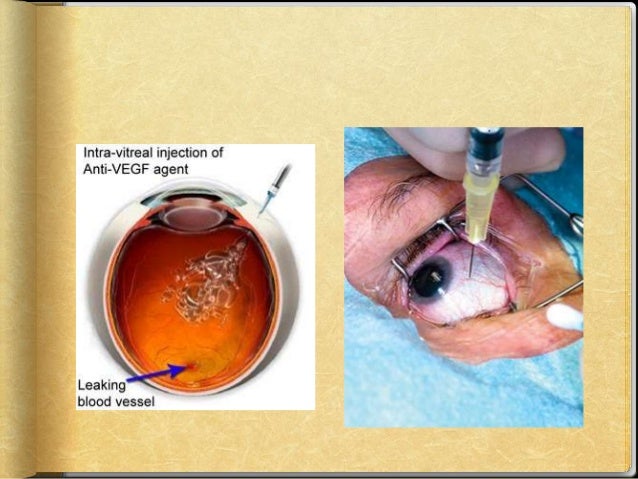Eye Shots For Wet Macular Degeneration 4,8/5 9891 reviews
- 'The macula is the center of the retina,' Dr. 'The retina is the camera of the eye that receives the light impulses and processes them, and the macula is responsible for the really fine visual acuity, the right precise vision.' Bakri says there are two kinds of macular degeneration: wet and dry.
- The following information provides general advice on the bill you will receive from your ophthalmologist for eye injections for the management of wet macular degeneration, diabetic.
- The following information provides general advice on the bill you will receive from your ophthalmologist for eye injections for the management of wet macular degeneration, diabetic retinopathy and similar conditions. It also gives some general information on your entitlements from Medicare.
If you are diagnosed with wet macular degeneration in one or both eyes, the standard treatment is to inject medicine into the affected eye (s). The injection is done with a very small needle (about the width of a hair) through the white of the eye.

Eye Injections Understanding Macular Degeneration Treatment
Do eye injections help macular degeneration?
A variety of treatment options are available to the retina specialist in the treatment of wet macular degeneration. Successful treatment can preserve vision and, in some cases, actually improve vision over time. In the modern era, eye injections have proven to be very helpful in the treatment of wet macular degeneration.
What injections are used for macular degeneration?
The three most common eye injections are Avastin, Eylea, and Lucentis. Dr. Stelton uses all three in his practice at SK Retina in Sarasota, Florida. Abnormal blood vessels (choroidal neovascular membranes) cause severe vision loss by growing underneath the center vision of the retina. These blood vessels are abnormal and cause leakage of fluid and blood under the retina. The goal of the eye injections is to halt the progression of these membranes and stabilize vision in many patients. Most patients will respond quickly to these eye medications and vision can be preserved. The drugs work by slowing the growth of these abnormal vessels by blocking the chemical factor that causes their formation (vascular endothelial growth factor or VEGF).
How is the medication injected into the eye?
The procedure is done in the ophthalmologist’s office and lasts just a few seconds. The anticipation and anxiety of your first injection is usually much worse than the procedure itself. The eye is made numb with a series of anesthetic medications. A solution is used to sterilize the surface of the eye. The eyelids are opened and the injection is made into the eye quickly and painlessly through the white portion of the eyeball using a very small needle. After the procedure, the surface of the eye is washed. Sometimes, eye antibiotic drops are used after the injection by some retina specialists. Dr. Stelton has a lot of experience working with patients through their anxiety and fears about eye injection therapy for wet macular degeneration.
Do injections into the eye hurt?
The anesthetic used to numb the surface of the eye is very powerful. The vast majority of patients do not feel pain during an eye injection. Eye discomfort is typically related to dryness or irritation of the surface of the eye due to the sterilizing solution or the drops used prior to your injection and the discomfort occurs after the injection is over. Mild ocular discomfort usually resolves quickly. Artificial tears and a good nap can help with discomfort after the procedure.
What are the common side effects of eye injections?
- The most common side effect is foreign body sensation or irritation of the eye after the injection.
- A small area of bleeding can occur around the injection site. This redness is simply a bruise and will resolve with time.
- Eye floaters can worsen momentarily as the medication swirls around inside of the eye.
- A black circle after eye injection is sometimes seen the first day and is a small amount of air that was present in the needle at the time of the injection. The air bubble is harmless and will resolve quickly.
- Inflammation or infection can develop after eye injection but this is extremely rare (approximately 0.05%).
After your first eye injection…
After the first injection, patients learn what to expect and find out that the procedure is both safe and effective. This helps to make for a comfortable, less scary experience the next time. Some patients may choose to switch retina specialists at some point during their course of therapy. They often find that the new doctor’s procedure is slightly different from their previous doctor. This is to be expected and often welcomed!